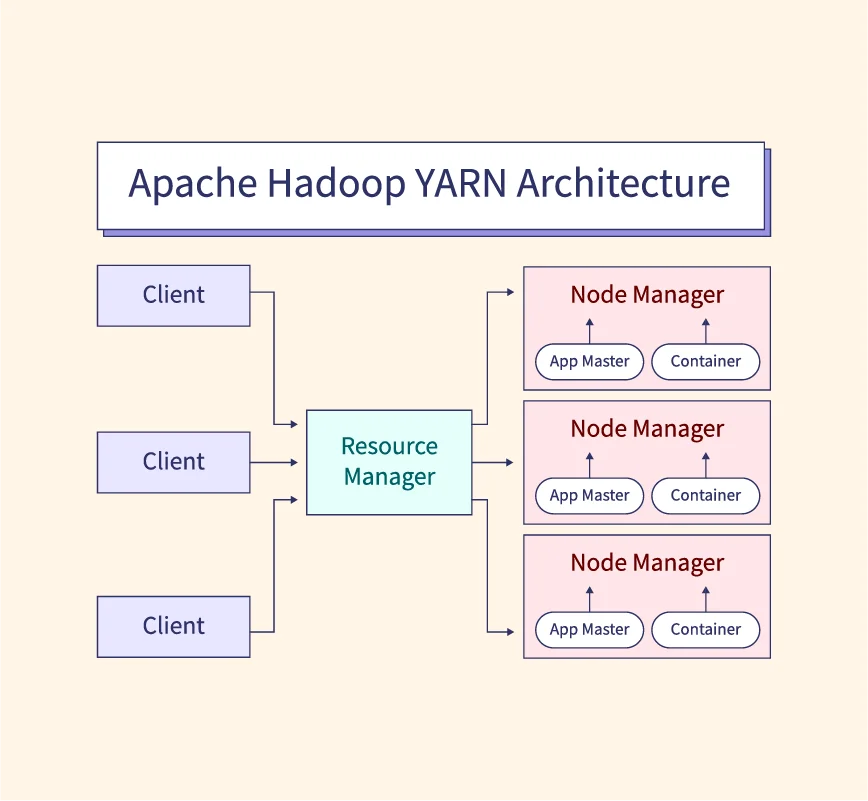Search algorithms are a fundamental part of artificial intelligence (AI), enabling machines to find solutions by exploring possible states or paths. There are two main types of search algorithms: informed and uninformed. While uninformed search algorithms explore the search space without additional knowledge, informed search algorithms use heuristic information to guide the search process more effectively.
Informed search algorithms are essential in solving complex AI problems, such as pathfinding in robotics or game development, where optimal solutions must be found efficiently. By leveraging heuristics, informed algorithms can reduce the search space, improving speed and performance.
Understanding Informed Search Algorithms
Informed search algorithms are a class of algorithms in artificial intelligence that use heuristic functions to guide the search process. A heuristic is a function that estimates the cost of reaching the goal from a given node, providing additional information that helps the algorithm make smarter decisions.
Role of Heuristics
Heuristics play a crucial role in informed search algorithms. They help prioritize which nodes or paths the algorithm should explore first by estimating how close a node is to the goal. This dramatically reduces the number of states explored, making the search process more efficient.
Comparison with Uninformed Search
In contrast to informed search, uninformed search algorithms like breadth-first or depth-first search explore the search space without any additional information, often leading to longer search times and inefficient exploration. For example, breadth-first search explores all possible states level by level, which can be highly time-consuming in large search spaces.
- Example of Informed Search: The A* algorithm is an informed search algorithm that uses both the cost to reach a node and an estimated cost to the goal to prioritize nodes.
Informed search algorithms offer the advantage of being more targeted, allowing them to find solutions faster by focusing only on the most promising paths.
Key Characteristics of Informed Search Algorithms
Informed search algorithms possess several defining characteristics that make them more efficient than their uninformed counterparts:
Use of Heuristic Functions
- Heuristic functions, typically denoted as h(n), estimate the cost from a node to the goal. A well-chosen heuristic can greatly enhance the efficiency of the search by guiding the algorithm toward the goal more directly.
Efficiency in Problem Solving
- By leveraging heuristic information, informed search algorithms can often solve problems faster than uninformed algorithms. The heuristic helps prune unnecessary nodes, reducing the overall number of nodes explored, thus saving time and computational resources.
Optimal Solution Capability
- Informed search algorithms like A* are capable of finding optimal solutions, provided that the heuristic is admissible (it never overestimates the true cost) and consistent (the heuristic satisfies a triangle inequality). This ensures that the algorithm finds the shortest or least costly path to the goal.
Admissibility and Consistency of Heuristics
- An admissible heuristic guarantees that the algorithm finds the optimal solution. A heuristic is admissible if it never overestimates the true cost to reach the goal.
- A consistent heuristic ensures that the cost of reaching the goal through a neighboring node is no greater than the direct cost, ensuring path optimality.
- By ensuring admissibility and consistency, informed search algorithms like A* can reliably solve complex optimization problems with both speed and accuracy.
Popular Informed Search Algorithms
Several popular informed search algorithms are widely used in artificial intelligence, each with its unique approach to utilizing heuristics for efficient problem-solving.
1. Greedy Best-First Search
Greedy Best-First Search is an informed search algorithm that selects the next node to explore based solely on the heuristic value, h(n), which estimates the cost to reach the goal. It always chooses the node that appears to be closest to the goal according to the heuristic, making it a fast algorithm but not always optimal.
- Advantages: Greedy best-first search is fast and efficient in smaller search spaces, as it focuses on the most promising nodes first.
- Limitations: The algorithm may not find the optimal solution because it only considers the heuristic and ignores the actual cost to reach a node.
Example: In navigation, the algorithm may select a path that appears shorter based on heuristic distance, but this may not account for obstacles, leading to suboptimal paths.
2. A* Algorithm
The A* algorithm is one of the most widely used informed search algorithms. It combines the actual cost to reach a node, g(n), with the heuristic estimate of the cost to the goal, h(n), to form the evaluation function:
$$f(n)=g(n)+h(n)$$
This balance between the actual cost and the estimated cost makes A* both complete and optimal, provided the heuristic is admissible.
- Advantages: A* is guaranteed to find the optimal solution if the heuristic is admissible and consistent. It efficiently narrows down the search space by focusing on promising nodes.
- Limitations: The algorithm’s performance can degrade in large search spaces, as it requires significant memory to store all the nodes it explores.
Example: A* is widely used in pathfinding algorithms for games and robotics, where finding the shortest path is critical.
3. IDA (Iterative Deepening A)**
IDA* is an extension of the A* algorithm that uses iterative deepening to reduce memory consumption. Instead of keeping all nodes in memory, it explores paths progressively deeper in the search space, discarding nodes from previous iterations that are no longer needed.
- Advantages: IDA* is memory-efficient, making it ideal for large search spaces where A* would consume too much memory.
- Use Cases: IDA* is commonly used in puzzle-solving problems like the 15-puzzle, where memory efficiency is crucial.
By combining the depth-first search strategy with heuristic-driven node exploration, IDA* ensures optimality without consuming excessive memory.
4. Beam Search
Beam Search is an informed search algorithm that limits the number of nodes explored at each level of the search tree, based on a predefined beam width. It evaluates a set number of the most promising nodes at each level, effectively narrowing the search space.
- Applications: Beam search is often used in natural language processing (NLP) for tasks like machine translation, where searching through all possible sentence structures is computationally expensive.
- Advantages: It reduces the search space significantly, making it faster than exhaustive searches.
- Limitations: Beam search may overlook the optimal solution due to its restricted exploration of nodes.
Python Implementation Example: A* Algorithm
The step-by-step explanation of how the A* algorithm operates with descriptions and code snippets for each step:
Step 1: Initialize Data Structures
In the A* algorithm, the primary data structures are the open list and the closed list. The open list contains nodes that need to be explored, while the closed list keeps track of nodes that have already been explored.
open_list = []
closed_list = set()Step 2: Main Search Loop
The main search loop picks the node from the open list with the lowest f(n) value and expands it by exploring its neighbors.
while open_list:
current_node = min(open_list, key=lambda x: x.f)
if current_node == goal_node:
return reconstruct_path(current_node)Step 3: Explore Neighbors
For each node, the algorithm evaluates the neighboring nodes, calculates their g(n) and h(n) values, and updates the open list accordingly.
for neighbor in get_neighbors(current_node):
tentative_g = current_node.g + 1
if neighbor not in open_list or tentative_g < neighbor.g:
neighbor.g = tentative_g
neighbor.f = neighbor.g + heuristic(neighbor, goal_node)
if neighbor not in open_list:
open_list.append(neighbor)Step 4: Visualize the Path
Once the goal is reached, the algorithm reconstructs the optimal path by tracing the parent nodes from the goal node back to the start.
def reconstruct_path(node):
path = []
while node:
path.append(node.position)
node = node.parent
return path[::-1]Complete Code for Implementing A* Algorithm
class Node:
def __init__(self, position, g=0, h=0, parent=None):
self.position = position
self.g = g
self.h = h
self.f = g + h
self.parent = parent
def a_star_algorithm(start, goal):
open_list = []
closed_list = set()
open_list.append(Node(start))
while open_list:
current_node = min(open_list, key=lambda x: x.f)
if current_node.position == goal:
return reconstruct_path(current_node)
open_list.remove(current_node)
closed_list.add(current_node)
for neighbor in get_neighbors(current_node):
if neighbor in closed_list:
continue
tentative_g = current_node.g + 1
if neighbor not in open_list or tentative_g < neighbor.g:
neighbor.g = tentative_g
neighbor.f = neighbor.g + heuristic(neighbor.position, goal)
neighbor.parent = current_node
if neighbor not in open_list:
open_list.append(neighbor)
return None # No path foundApplications of Informed Search Algorithms
Informed search algorithms have a wide range of applications, especially in areas where optimal decision-making and pathfinding are required. Below are the key fields where informed search algorithms are commonly applied:
Pathfinding in Robotics
Informed search algorithms like A* are critical in robotics for finding the optimal path between two points while avoiding obstacles. Robots use these algorithms to navigate complex environments efficiently, ensuring that they take the shortest or safest path to their destination.
- Example: In warehouse robots, A* is used to plan optimal routes for picking and transporting items, minimizing travel time and avoiding collisions with obstacles.
Route Optimization in GPS Systems
GPS navigation systems heavily rely on informed search algorithms to determine the fastest route to a destination. These algorithms factor in distance, traffic, and road conditions to provide the most efficient path.
- Example: In apps like Google Maps, A* and similar algorithms are used to calculate the shortest driving route, taking real-time traffic data into account to update routes as conditions change.
Problem Solving in Games
Informed search algorithms are widely used in video games to control the movement of characters and solve complex puzzles. These algorithms help non-player characters (NPCs) make intelligent decisions about navigating game environments.
- Example: In games like Pac-Man, A* is used to guide the ghosts’ movement, helping them pursue the player through the maze in the most efficient way.
Advantages of Informed Search Algorithms
Informed search algorithms offer several significant advantages that make them ideal for solving complex problems:
1. Faster and More Efficient
- By using heuristics to guide the search, informed search algorithms explore fewer nodes than uninformed searches, making the process faster and more efficient. The heuristic function helps the algorithm prioritize the most promising paths, leading to quicker solutions.
2. Finds Optimal Solutions
- Algorithms like A* guarantee optimal solutions when an admissible and consistent heuristic is used. This makes them highly effective for applications where the best possible outcome is required, such as in navigation or robotics.
3. Scalable to Real-World Problems
- Informed search algorithms can be scaled to solve real-world problems in fields like logistics, robotics, and finance. Their ability to handle large search spaces efficiently makes them suitable for complex scenarios with multiple variables and constraints.
Challenges and Considerations
Despite their many advantages, informed search algorithms face several challenges that must be considered:
1. Dependency on Accurate Heuristics
- The performance of informed search algorithms depends heavily on the accuracy of the heuristic function. A poorly chosen heuristic can lead the algorithm astray, resulting in longer search times or suboptimal solutions.
2. Time and Memory Complexity
- While informed search algorithms are efficient in many cases, they can become time-consuming and memory-intensive when applied to large search spaces. Algorithms like A* store all explored nodes in memory, which can be a limitation in vast or highly complex environments.
3. Heuristic Misestimation Pitfalls
- If the heuristic function overestimates the cost to reach the goal, the algorithm may fail to find the optimal solution. This is particularly problematic in critical applications where accuracy is essential, such as healthcare or autonomous driving.
Conclusion
Informed search algorithms are a cornerstone of artificial intelligence, enabling machines to solve complex problems more efficiently by leveraging heuristics. Algorithms like A*, Greedy Best-First Search, and Beam Search have widespread applications in robotics, GPS navigation, and gaming, where they excel in pathfinding and decision-making tasks. Their ability to balance speed and accuracy makes them indispensable in AI-driven systems.
However, these algorithms are not without challenges. Their effectiveness depends on the quality of the heuristic function, and they can be resource-intensive in large search spaces. Despite these limitations, informed search algorithms remain crucial for solving real-world problems and will continue to evolve as AI technology advances.
References:


